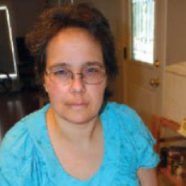I was in the News
I was featured on the website, Liberation Treatment CCSVI, on August 30th, 2010.
To go to page
Woman takes on treatment
Debra McDonald lifts her hands and, with a triumphant smile, flexes her fingers.
To the 42-year-old woman, who has spent the last 13 years living with progressively more debilitating effects of multiple sclerosis (MS), this is indeed a major accomplishment.
Prior to a July 27 balloon angioplasty, McDonald suffered severe spasms in her legs and hands, numbness in her hands and feet and circulation so poor that her feet were almost black.
Her hands were clenched and she was plagued by incontinence and the inability to do things for herself.
“I was pretty much paralyzed, she says. “Your dignity is gone, you’re tied to the washroom and your quality of life is down the tube, (particularly) for an extrovert.”
An athletic woman who loves sports and the great outdoors, McDonald was diagnosed with MS in 1997 and spent the next five years packing as many of her favourite things into her life as possible. A silviculture supervisor, McDonald was used to trekking through the woods, but had to modify her job to more office work as MS stole various capabilities – a job she managed to continue until eight weeks ago.
“It’s a real struggle now. I have difficulty typing or holding a pen,” she says. “I was given the option to take time off to do what I needed to get things going again.”
Getting going included a long and tiring trip to Mexico for a treatment that is readily available in Canada to those with cardiac issues, but not to MS patients.
“Treatment for MS in Canada is zero,” says a frustrated McDonald. “I did have drugs but they didn’t do any good.”
Hope was not a prominent word in her vocabulary until November 2009, when a news item on TV described the work of an Italian doctor who suggested an abnormality in blood drainage from the brain and spinal cord may contribute to nervous system damage in MS.
MS societies in Canada and the U.S. agreed to commit $2.4 million to further research and five Canadian provinces and Seattle, Wa. have specialized radiologists who are testing chronic cerebrospinal venous insufficiency (CCSVI).
Because the procedure is not covered by B.C.’s Medical Services Plan, McDonald and her husband, Grant, spent $15,000 to get testing and treatment in Merida, Mexico.
Testing revealed that the blood flow in a vein just below McDonald’s collarbone was down to 0.1 mm of flow in comparison to the vein on the other side of her neck, which was a healthier 1.1 mm.
The day after the testing, McDonald underwent the procedure and recalls the joy of waking up the next morning to warm feet and the ability to wiggle her toes and unclench her hands.
And other improvements have come too. McDonald is now able to have physiotherapy, finds objects easier to hold and is gaining strength.
“Before, I couldn’t lift my legs or contract muscles and my legs were so spastic I could barely stand even with my husband’s help,” she says, noting she can now lift herself up out of her wheelchair and walk six or seven steps with a walker. “And I can whistle again.”
Before she and Grant headed to Mexico, McDonald gave Dr. Warren Bell a list of all her symptoms. On her return, the two discussed the improvements, including her ability to pronounce the letter L again.
McDonald will need to have an MRI in six months and is wondering whether she will go on an extended B.C. wait-list or go elsewhere, opening her own purse again to do so.
Bell meanwhile favours providing the procedure in B.C.
“Because the risk-benefit ratio is so favourable, it is a procedure that I would recommend,” she says. “So little is done for MS… especially in a patient where the disease is severe and the options are few, it’s something I think should be given really serious consideration.”









 Facebook
Facebook Twitter
Twitter About.Me
About.Me